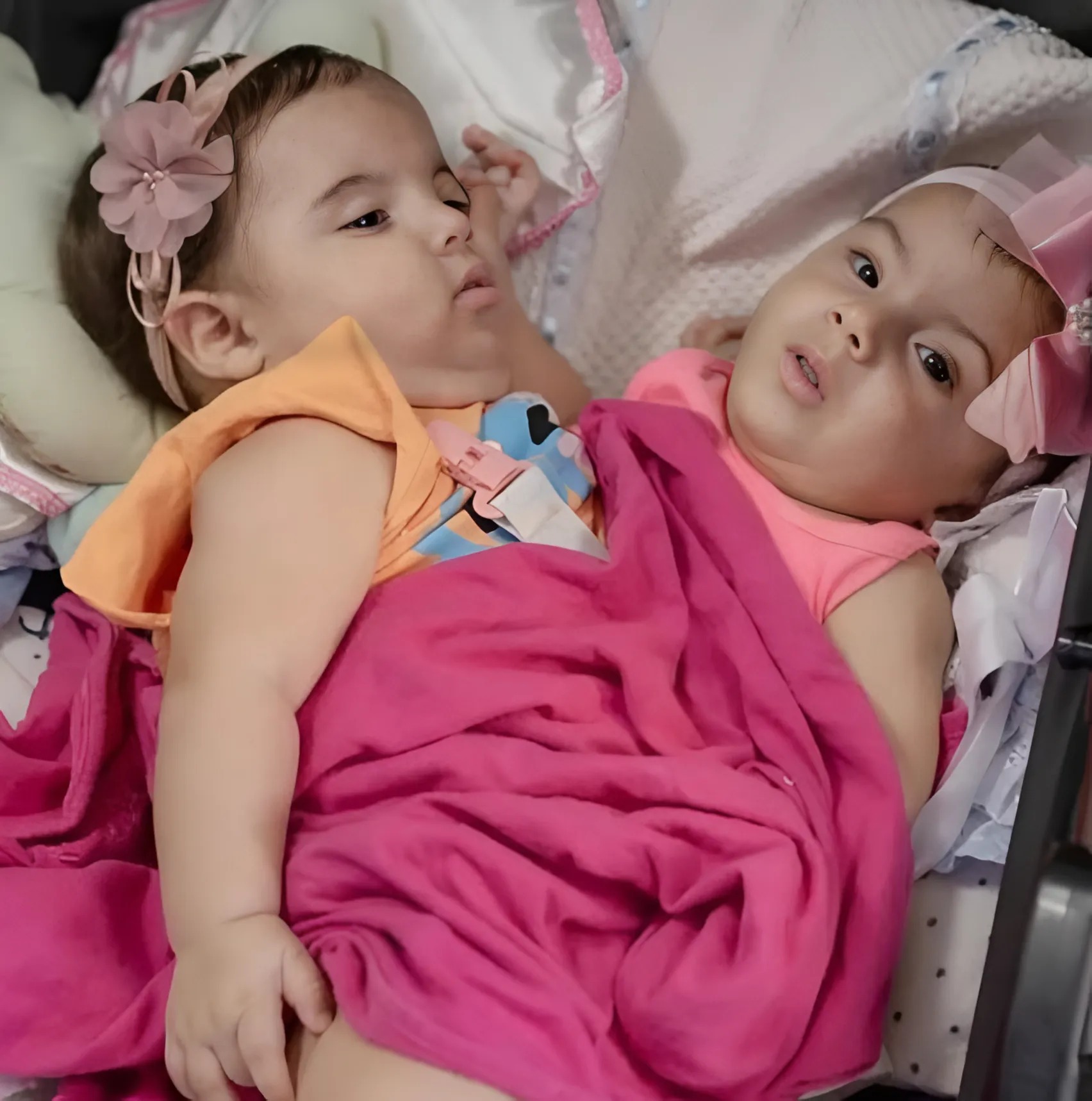In the warm heart of Brazil, deep in the state of Goiás, a miracle came into the world — two baby girls, Kiraz and Aruna. But their birth, as extraordinary as it was, came with an unimaginable challenge. The sisters were conjoined twins, connected at the chest, sharing more than just a physical bond. They had one stomach, three legs between them, and their pelvic bones were fused into one. From the moment they took their first breath, their lives became a race against time — a race filled with uncertainty, courage, and hope.
Their parents, though overwhelmed with emotion, never gave up on them. They named their daughters with love, cared for them gently, and placed all their trust in the hands of the doctors who promised to do everything possible. From the very beginning, it was clear: for Kiraz and Aruna to live full, independent lives, they would one day have to be separated. But that day would not come quickly — or easily.
Months turned into a whirlwind of preparation. A team of doctors, nurses, and specialists from all over Brazil began to assemble — not just to perform a surgery, but to create a plan so intricate, so precise, that every second, every incision, had to be rehearsed over and over again. Medical simulations, 3D reconstructions, and team coordination drills were carried out tirelessly. Each member of the team had a role, and each decision could make the difference between success and heartbreak.
When the long-awaited day arrived, the hospital was tense with both anxiety and hope. The operating room was transformed into something almost surreal — a space brimming with life, energy, and a shared mission. Sixty specialists, from anesthesiologists to pediatric surgeons, cardiac experts to orthopedic specialists, filled the room. Sixteen-person teams rotated in shifts every four hours to stay alert and focused, ensuring that fatigue wouldn’t compromise precision.
The surgery itself lasted 15 grueling hours. Every phase was critical. The separation of the shared stomach. The delicate work around the liver and chest cavity. The reconstruction of their pelvic areas. Each moment demanded full attention, and each second felt like an eternity.
Finally, as the last connection between their bodies was carefully divided, someone quietly announced, “They are separated.” For a moment, the room — previously humming with quiet activity — fell silent. The air seemed to pause, holding its breath alongside the team. Then came the tears, the hugs, and the overwhelming release of emotion. Against all odds, Kiraz and Aruna were now two individuals — two little girls with their own bodies, their own chance at life.
Today, the sisters remain in the intensive care unit, surrounded by machines, soft lights, and the steady rhythm of beeping monitors. Their bodies are still recovering from the immense stress of the operation. There are scars to heal, bones to strengthen, and muscles to train. The road ahead will be long and filled with challenges — physical therapy, surgeries, and constant monitoring. But the hardest part, the most dangerous part, is behind them.
Even though they are no longer physically attached, Kiraz and Aruna will always share something far deeper than anatomy. They have already faced more in their first year of life than most do in a lifetime. Their bond isn’t just one of biology — it’s made of resilience, strength, and love.
One day, they will grow up with their own voices, personalities, and dreams. But they’ll carry this incredible story with them — a story of two sisters who entered the world as one and, thanks to human courage and compassion, now have the chance to walk through it side by side.





